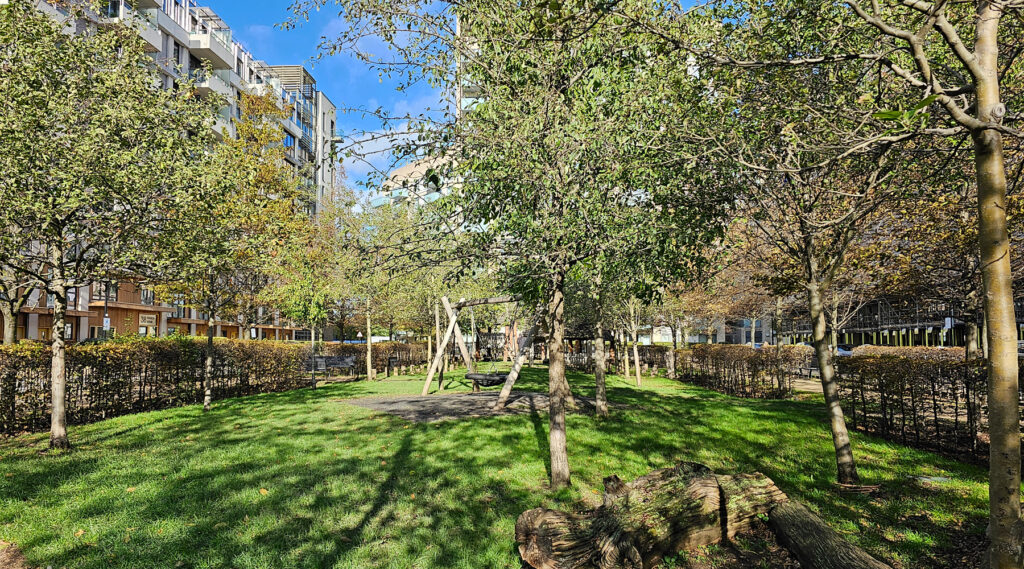A decade ago, a new Stratford park was being enjoyed by athletes relaxing from the Olympics and a year later it opened to the less athletic public. A decade on, it’s bedded in, but also showing signs of a decade of use in places.
Mirabelle Gardens, which an early press release described as being “inspired by London’s famous squares”, although unlike many of those, this one is open to the public as well as the local residents. The gardens and most of the Olympic Park’s housing sits on the former Stratford Works, the Great Eastern Railway’s huge locomotive-building works site, and although much reduced from the 1960s, only closed in 1991.
The railway site took over what was farmland and slowly expanded decade by decade. The spot where Mirabelle Gardens is today is just to the south of the Chobham Farmhouse buildings and was always farmland until the railways arrived.
So, in effect, the land has likely only been a farm, then the railway, and now a pocket park. According to the early masterplan documents, it was also originally going to be called Stratford Green, but later was renamed Mirabelle Gardens.
By random coincidence, the diagonal footpath just happens to follow the same direction of a temporary road used during the Olympics construction works, although the road had long since vanished when the blocks of flats and the gardens were laid out – so it’s just a random coincidence, that only someone trawling though old satellite photos would have even noticed.
The gardens — and yes, it’s technically two gardens — separated by the diagonal path and surrounded on all sides by a hedge and seating lined pathway.
The southern garden is mostly open lawn, albeit showing the effects of heavy use and recent heavy rain shortly before my visit.
As it moves northwards, the lawn is replaced with a scattered woodland of young trees, and then further north it evolves into a children’s playground area. I say children, in fact, it was mostly being used by adults chatting on phones.
There are a number of huts made from wood beams, with some lovely rusticated shingle roofs that are ageing beautifully now. When the hedges have foliage, a footbridge through the hedge at one spot is probably quite exciting, if rather less so at the moment.
Elsewhere in the park is what looks to be a giant birdbath and a sculpted stone egg, which is probably public art, but I struggled to find out anything about it.
It was certainly showing the effects of the bad weather on my visit, but give it time to recover and it’ll look a lot more welcoming come next spring.













This post is just like looking out of my window!
Serves as a permanent reminder as to what a total waste of money the London Olympics were. How much more could have been achieved for many more people with the vast amount squandered on a political vanity project that did nothing to encourage sport